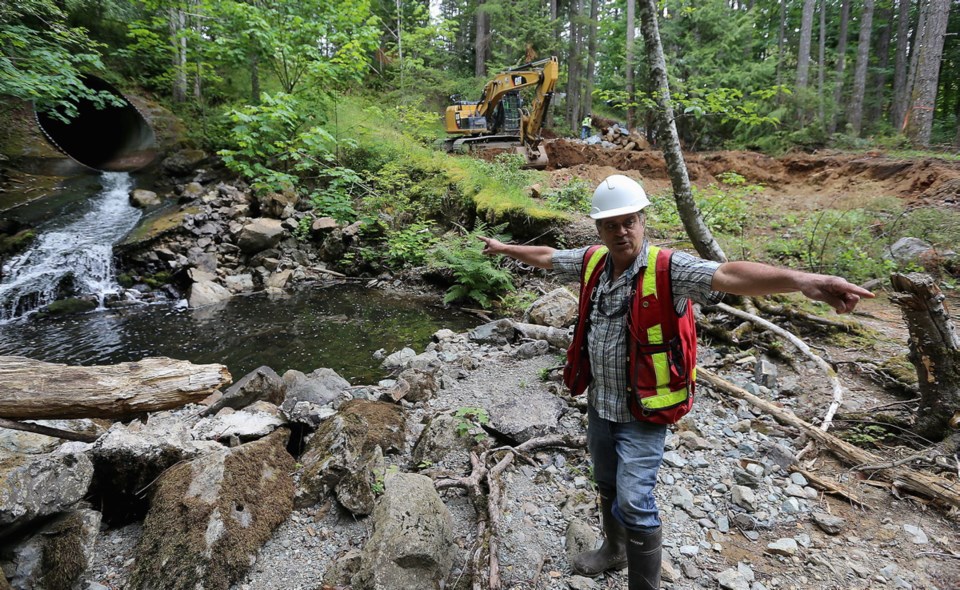Thousands of coho are expected to return to spawn when the $800,000 Millstream Fish Ladder Project is completed in a few months.
Right now, the annual coho return ranges from 250 to 750. An additional 3,000 fish are expected.
The Peninsula Streams Society is working with the Goldstream Volunteer Salmonid Enhancement Society and other groups to create a “fishway” that will let fish move through a large culvert under Atkins Road, near Mill Hill Regional Park.
Construction began Monday on the project, which will give coho and cutthroat trout access to an extra seven kilometres of habitat in Millstream Creek.
The project had been set to go ahead in 2018 but not enough funding could be secured. Eighty per cent of the necessary funding is now in place. The Pacific Salmon Foundation and the B.C. Salmon Restoration & Innovation Fund are key supporters.
To prepare for construction, several trees were removed to provide access for equipment. Native plants were salvaged during the process.
The project calls for at least four trees to be planted for each one removed, and the salvaged plants will be replanted in the fall.
Ian Bruce, executive co-ordinator for the Peninsula Streams Society, said a lot of work has already gone into making the project a reality.
“I’ve been working on it for five years, but it’s been in the process for over 25 years,” he said.
Bruce said the initial efforts began with volunteers working in the lower portion of the river and getting as far as the Atkins Road culvert, which they couldn’t get past.
“When I saw what the volunteers had done lower down to bring the fish up that far, I thought I’ve got to see this thing through.”
The current work will include a series of 14 “step pools” to help the coho on their way. He described the fishway as “just basically a jump and another jump.”
Bruce said he sees the project as helping to fix the things that humans do to make things more difficult for fish, like overharvesting.
“It’s kind of giving back in one sense to fish so that they have an opportunity to access habitat that they can’t without our help.”



